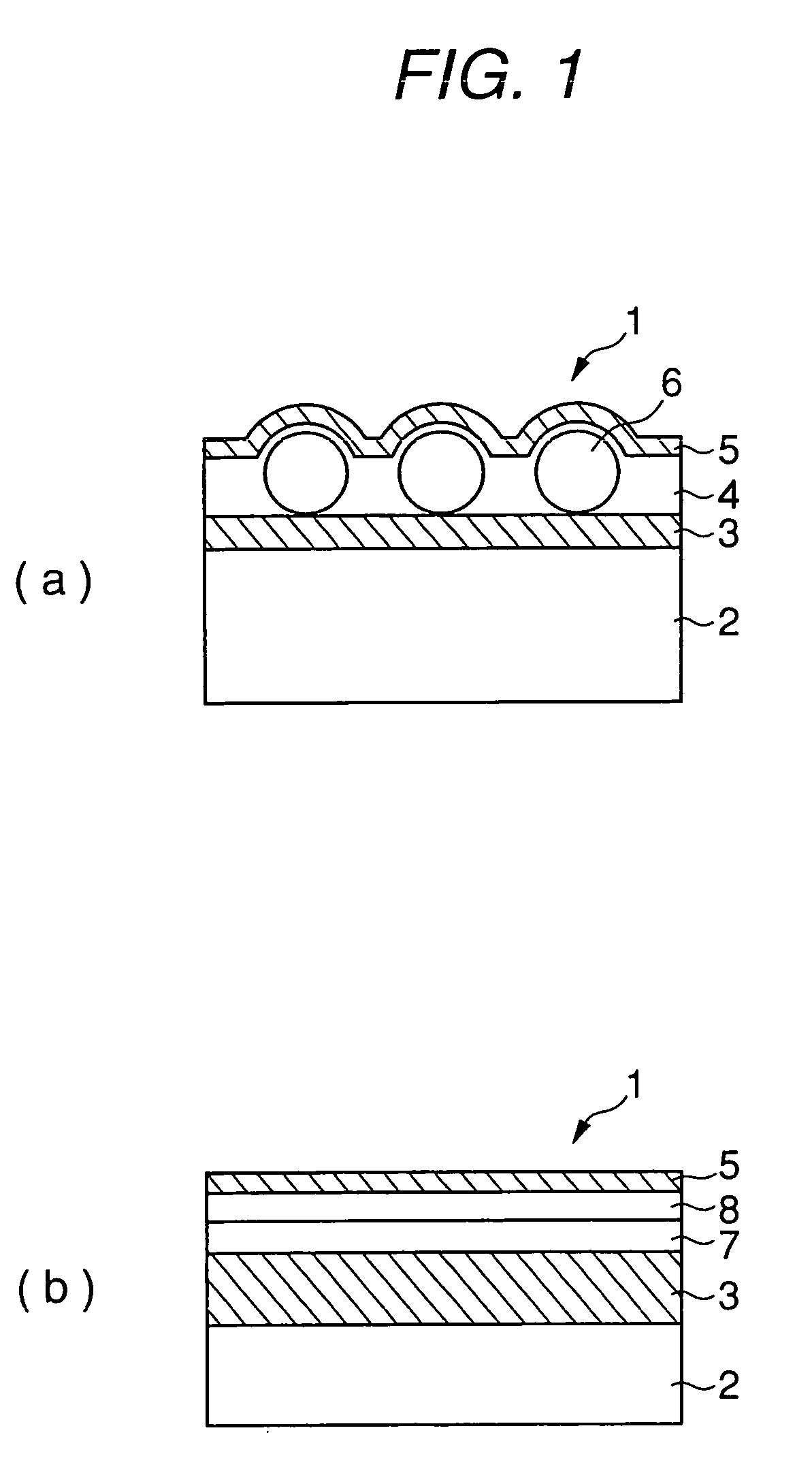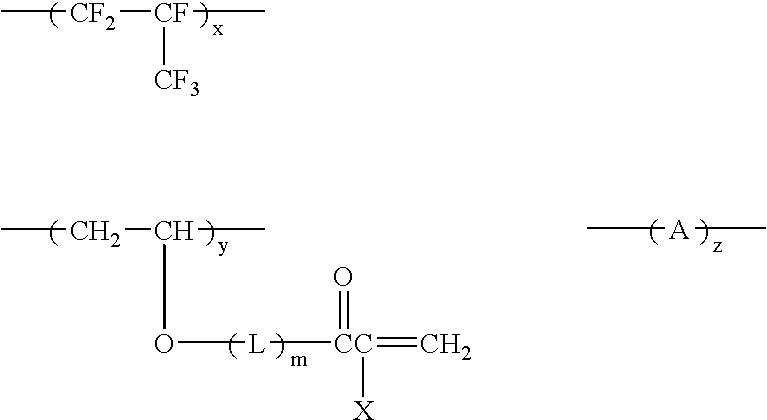Antireflection film, polarized plate and image display device
- Summary
- Abstract
- Description
- Claims
- Application Information
AI Technical Summary
Benefits of technology
Problems solved by technology
Method used
Image
Examples
example 1
[0371] (1) Formation of Antiglare Hard Coat Layer
[0372] A 80 μm-thick triacetyl cellulose film (TAC-TD80UL, produced by Fuji Photo Film Co., Ltd.) in a roll form was unrolled and thereon, Coating Solution A for antiglare hard coat layer prepared above was coated using a doctor blade and a microgravure roll having a diameter of 50 mm and having a gravure pattern with a line number of 180 lines / inch and a depth of 40 μm, at a gravure roll rotation number of 30 rpm and a transportation speed of 10 m / min. Thereafter, the coating solution was dried at 60° C. for 150 seconds and then an ultraviolet ray was irradiated thereon at an illuminance of 400 mW / cm2 and a dose of 250 mJ / cm2 using an air cooled metal halide lamp of 160 W / cm (manufactured by I-Graphics K.K.) under nitrogen purging to cure the coating layer and thereby form an antiglare hard coat layer having a thickness of 4.3 μm. Then, the film was taken up.
[0373] (2) Formation of Low Refractive Index Layer
[0374] The triacetyl ce...
example 2
[0431] (Preparation of Coating Solution for Hard Coat Layer)
[0432] To 315.0 g of a dipentaerythritol pentaacrylate and dipentaerythritol hexaacrylate mixture (DPHA, produced by Nippon Kayaku Co., Ltd.), 450.0 g of a methyl ethyl ketone dispersion solution of silica fine particle (MEK-ST, solid concentration: 30 mass %, produced by Nissan Chemicals Industries, Ltd.), 15.0 g of methyl ethyl ketone, 220.0 g of cyclohexanone and 16.0 g of a photopolymerization initiator (Irgacure 907, produced by Nippon Ciba Geigy) were added and stirred. The resulting solution was filtered through a polypropylene-made filter having a pore size of 0.4 μm to prepare a coating solution for hard coat layer.
[0433] (Preparation of Titanium Dioxide Fine Particle Dispersion Solution)
[0434] The titanium dioxide fine particle used was a titanium dioxide fine particle (MPT-129, produced by Ishihara Sangyo Kaisha, Ltd.) containing cobalt and surface-treated by using aluminum hydroxide and zirconium hydroxide.
[...
example 3
[0463] A PVA film was dipped in an aqueous solution containing 2.0 g / liter of iodine and 4.0 g / liter of potassium iodide at 25° C. for 240 seconds and further dipped in an aqueous solution containing 10 g / liter of boric acid at 25° C. for 60 seconds. Subsequently, the film was introduced into a tenter stretching machine in the form shown in FIG. 2 of JP-A-2002-86554 and stretched to 5.3 times. Then, the tenter was bent as shown in FIG. 2 with respect to the stretching direction and thereafter, the width was kept constant. The film was dried in an atmosphere at 80° C. and removed from the tenter. The difference in the conveyance speed between right and left tenter clips was less than 0.05% and the angle made by the center line of film introduced and the center line of film delivered to the next step was 46°. Here, |L1-L2| was 0.7 m, W was 0.7 m and a relationship of |L1-L2|=W was established. The substantial stretching direction Ax-Cx at the tenter outlet was inclined at 45° with res...
PUM
| Property | Measurement | Unit |
|---|---|---|
| Fraction | aaaaa | aaaaa |
| Fraction | aaaaa | aaaaa |
| Angle | aaaaa | aaaaa |
Abstract
Description
Claims
Application Information
 Login to View More
Login to View More - R&D
- Intellectual Property
- Life Sciences
- Materials
- Tech Scout
- Unparalleled Data Quality
- Higher Quality Content
- 60% Fewer Hallucinations
Browse by: Latest US Patents, China's latest patents, Technical Efficacy Thesaurus, Application Domain, Technology Topic, Popular Technical Reports.
© 2025 PatSnap. All rights reserved.Legal|Privacy policy|Modern Slavery Act Transparency Statement|Sitemap|About US| Contact US: help@patsnap.com



